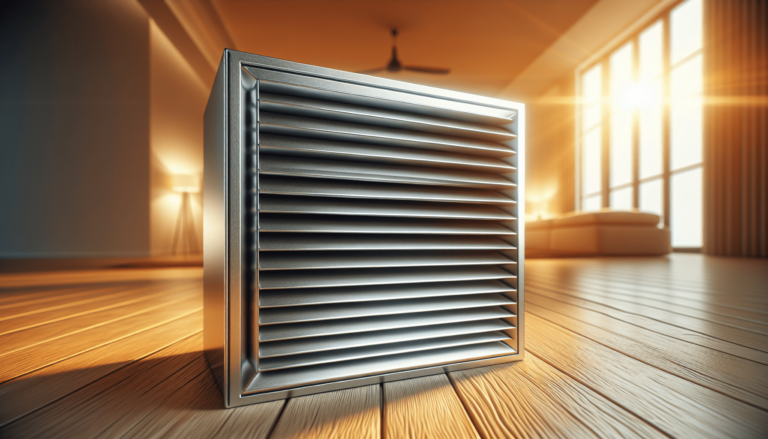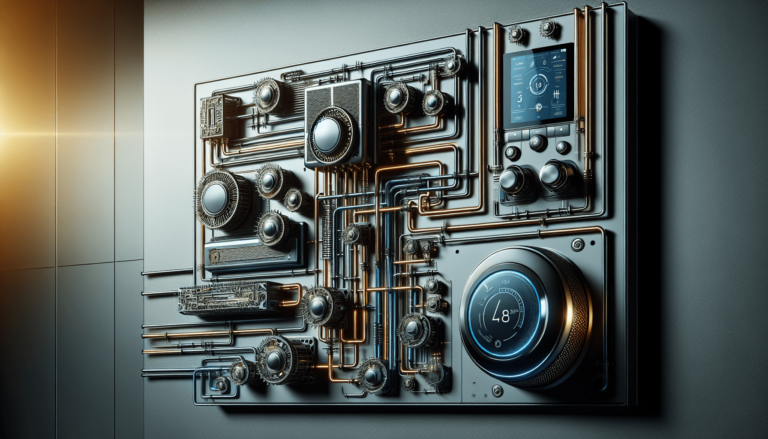

HVAC Services
Get Professional Repairs From The Area's Trusted HVAC Technicians. Ask About Our Services! We Offer Professional Heating & Cooling System Repairs And Guarantee Long-Lasting Results.
Got Question? Call us: (850) 678-2665Financing
Zoned HVAC Systems: Advantages And Set-Up Guide
Optimize your home's comfort and efficiency with our guide on zoned HVAC systems. Learn about advantages and easy set-up steps from Tempacure experts. Save energy today!

Discover the benefits of zoned HVAC systems with our comprehensive guide, “Zoned HVAC Systems: Advantages And Set-Up Guide.” By tailoring the heating and cooling in different areas of your home, you can enhance comfort and save on energy costs. Our easy-to-follow set-up guide, created by Tempacure Heating and Air Conditioning in Niceville, FL, will walk you through the process to ensure your system is optimized for efficiency and performance. For expert advice and installation, trust Tempacure, your local HVAC specialists.
Have you ever wondered why some rooms in your house feel like the Arctic while others mimic the Sahara Desert? You might adjust the thermostat over and over again, but achieving that perfect home temperature seems like chasing a unicorn. Well, guess what? Zoned HVAC systems can be the fantastic unicorn you’ve been searching for.
Zoned HVAC Systems: Advantages And Set-Up Guide
Why You Should Care About Zoned HVAC Systems
Imagine every room in your home being its own climate paradise, as comfortable as your favorite pair of socks. Zoned HVAC systems allow you to do just that! They make controlling the temperature of different areas (or “zones”) within your home a breeze. With this setup, you can say goodbye to complaints from family members about the temperature and hello to consistent comfort, energy efficiency, and savings.
What Is a Zoned HVAC System?
In layman’s terms, a zoned HVAC system divides your home into distinct areas, each regulated by its own thermostat. Think of it as a football team – the quarterback (main thermostat) calls the plays, but each player (zone) has its own specific role on the field. This approach means you don’t have to blast the cooling or heating in the whole house just so your upstairs bedroom isn’t a sauna.

The Main Players: Components of a Zoned HVAC System
Understanding the key components of a zoned HVAC system is the first step toward appreciating how it fits into your home. Here are the main players:
- Thermostats: Every zone gets its own thermostat, leading the helm on climate control.
- Zone Dampers: These mechanical devices live in your ductwork and can open or close to control airflow.
- Control Panel: The brain of the operation, managing communication between thermostats and dampers.
Thermostats: The Zone Captains
Thermostats are like the zone captains of your HVAC system, constantly assessing and adjusting to keep their area within the desired comfort level. Whether they’re hi-tech smart versions or the classic models, these gadgets are essential.
Zone Dampers: Gatekeepers of Airflow
Zone dampers are the unsung heroes, residing quietly in your ductwork. These gatekeepers open or close to adjust airflow to different parts of your home. They’re the difference between a cozy reading nook and a sweltering kitchen.
Control Panel: The Command Center
This is the brain of your zoned HVAC system, orchestrating the dance between thermostats and zone dampers. It ensures everyone is in sync, enabling you to bask in comfort without lifting a finger.
Advantages of Zoned HVAC Systems
You might be thinking, “Okay, this sounds cool, but what’s in it for me?” Let’s dive into the advantages that will make you wonder why you haven’t zoned your HVAC system sooner. Here, we’ll explore the benefits that make zoned HVAC systems not just a luxury, but a smart investment.
Energy Efficiency
Let’s start with energy efficiency because who doesn’t like saving money? By only heating or cooling the areas you’re using, a zoned system cuts down on energy waste. Imagine no longer heating an empty guest room or cooling a vacant basement.
Enhanced Comfort
If you’ve ever lived in a house where the upstairs felt like the sun while downstairs resembled the Arctic, you’ll appreciate this. Zoned HVAC systems can provide consistent comfort by maintaining optimal temperatures in every zone.
Increased Lifespan of Equipment
Your HVAC system doesn’t have to work as hard when it’s zoned, leading to less wear and tear. Over time, this results in fewer repairs and a longer life for your HVAC equipment.
Cost Savings
You’re not just saving energy; you’re saving money, honey! Reduced energy consumption leads to lower utility bills. Plus, fewer service calls mean more cash in your pocket.
Environmentally Friendly
Being green is more than a trend; it’s a responsibility. Zoned HVAC systems use less energy, making them more eco-friendly. You can feel good about your carbon footprint while staying comfy.

How to Set Up a Zoned HVAC System: A Step-by-Step Guide
So, now that you’re itching to get a zoned HVAC system, let’s dive into the setup. Setting up a zoned HVAC system isn’t rocket science, but it does require some know-how.
Step 1: Assess Your Home’s Layout
Start by evaluating your home’s layout. The number of floors, room sizes, and how you use each space will influence your zoning plan. A typical home can be divided into zones like the living area, bedrooms, kitchen, and basements.
Step 2: Choose Your Thermostats
Invest in thermostats that suit your lifestyle. Smart thermostats can be controlled via a smartphone, offering next-level convenience. Consider the features you need versus the ones that might just collect dust.
Step 3: Install Zone Dampers
Zone dampers are located inside your air ducts. If you’re handy, you might attempt this yourself, but hiring a pro can save you a lot of huffing and puffing. Correct installation is key for optimal performance.
Step 4: Set Up the Control Panel
The control panel needs to be wired into your HVAC system. This step requires some technical expertise. If electricity isn’t your thing, it’s best to leave this to the experts.
Step 5: Program the System
Once everything is in place, programming your thermostats and control panel is the final step. Create settings that align with your daily routine. For example, the living room can be cooler during the day and warmer in the evenings when it’s more occupied.
Common Pitfalls to Avoid
Like any home improvement project, zoning your HVAC system has its pitfalls. Here’s what to watch out for:
Overcomplicating the Zones
Less is more! Too many zones can complicate the installation process and make the system more susceptible to glitches. Stick to larger zones to maintain simplicity and efficiency.
Ignoring Professional Help
It might be tempting to go full DIY, but some aspects of zoning your HVAC system require a professional touch. Unless you moonlight as an HVAC technician, consider hiring a pro for installation.
Not Leveraging Smart Technology
Sure, manual thermostats are nostalgic, but integrating smart technology can enhance your zoned system’s effectiveness. Smart thermostats offer features like remote control, learning algorithms, and energy usage reports.
Case Studies: Real-Life Success Stories
Still skeptical? Let’s look at some real-life examples to showcase the benefits of zoned HVAC systems.
John’s Multi-Story Maze
John lives in a two-story house where the upstairs often feels like a furnace. After installing a zoned HVAC system, he noticed immediate changes. The living room stayed cool without freezing his bedroom. His energy bill decreased by 20% within months.
The Apartment Dilemma of Sarah
Sarah had always struggled with uneven heating in her duplex apartment. She gave zoned HVAC a shot, and it was a game-changer. No more cold mornings in the kitchen, and her elderly parents staying over were much more comfortable.
The Off-Grid Enthusiast
Mike’s eco-friendly home couldn’t accommodate a traditional HVAC system. With a zoned setup, he managed to achieve energy efficiency without sacrificing comfort. His house stays cozy with minimal energy expenditure.
FAQ: Your Burning Questions Answered
Got questions? We’ve got answers! Here’s a mini FAQ section to clear up any lingering doubts.
Can I Zone an Existing HVAC System?
Yes, you can retrofit an existing setup to become zoned. However, it’s usually easier and more cost-effective to install zoning during a new HVAC system installation.
How Much Does It Cost?
The cost varies based on factors like the number of zones, type of thermostats, and labor charges. On average, expect to spend between $1,500 and $4,500.
Is Maintenance Different?
Maintaining a zoned HVAC system is similar to a regular one, but do check the zone dampers and control panel annually. As always, regular filter changes and annual professional inspections are advised.
What If a Zone Stops Working?
If a zone stops working, it’s usually due to a malfunctioning damper or thermostat. Check the basics first, and if all else fails, call in an expert.
When to Call the Pros
Sometimes DIY can become DIY-oh-no! Here’s when you should call Tempacure Heating and Air Conditioning for professional help:
- Complex Installations: Retrofitting existing systems or elaborate new installations.
- Electrical Work: If wiring the control panel feels like defusing a bomb, call a professional.
- Troubleshooting: When a zone isn’t working as expected, it might require an expert diagnosis.
Contact Info
For top-notch service, contact Tempacure Heating and Air Conditioning:
Tempacure Heating and Air Conditioning
325 Cedar Ave S
Suite B
Niceville, FL 32578
(850) 678-2665
Visit Tempacure
Wrapping It Up
Zoned HVAC systems are like the Swiss Army knives of home comfort—versatile, efficient, and incredibly useful. They help you achieve that elusive perfect temperature in every room while saving you money and energy. So, if you’ve been living with less-than-ideal climate conditions at home, maybe it’s time to consider zoning. Your comfort (and wallet) will thank you!
Ready to make the change? Whether you go DIY or call in the experts, zoned HVAC systems are a fantastic investment in your home comfort. So, why wait? Step into a world where every room feels just right, and future you will thank you endlessly.
And remember, Tempacure Heating and Air Conditioning is always there to make your transition smoother than butter on toast. Cheers to a cozier, more efficient home!







